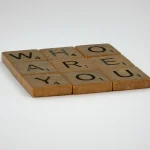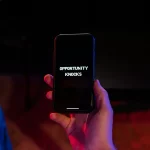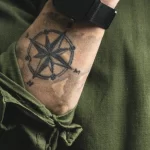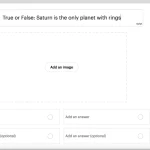When designing resources, it is important to consider the theories, principles and models that are to assist the process with the goal of creating better resources. For example, different resources will suit different stages of the Kolb learning cycle:
Concrete Experience is best suited to resources such as Realia or using relevant equipment, allowing students to experience industry equipment or devices will provide a very applicable experience. For example, in a hardware lesson I will provide all the necessary components to build a computer from 10 years ago. This will allow students to experience the process of building a computer.
During the Reflective Observation it is likely the student will be reflecting upon their experience in the Concrete Experience stage, as a result this stage will benefit from evaluation sheets and Q&A sheets to assist in structuring their reflection. I use evaluation sheets during hardware lessons so that students can evaluate how they performed while building the computer, highlighting any issues they had, this can go directly into their assignments.
Abstract Conceptualisation stage is the opportunity for students to conceptualise and think outside the box, the goal for students to expand their knowledge of the Concrete Experience, possibly approaching the activity from a different angle, using relevant case studies, videos of the activity being completed in industry and guest speakers will all provide a valuable opportunity for students. I provide several types of installation guides, along with video installation tutorials; this allows students to see multiple different perspectives on how to build a computer using both older and modern components.
Finally, the Active Experimentation stage involves putting the newly found knowledge from the Abstract Conceptualisation into practice in the form of an experiment; this stage may require different equipment from what was used in the Concrete Experience. The active Experimentation stage in my hardware lesson involves students being provided with modern components so that they can put the Abstract Conceptualisation into practice. This cycle can also continue into different types of components, such as server or laptop components also providing a level of differentiation.
Another theory that should be considered when creating resources is Gardner’s Multiple Intelligences theory. “Gardner proposed that there are eight intelligences, and has suggested the possible addition of a ninth known as existentialist intelligence.” (Cherry, 2019) The intelligences are Visual-Spatial, Linguistic-Verbal, Logical-Mathematical, Bodily-Kinaesthetic, Musical, Interpersonal, Intrapersonal and Naturalistic. It would be impossible to create a resource that meets all of these; as a result, while I consider Gardner’s theory when creating resources, I find it more appropriate to create a selection of resources that meet a selection of Gardner’s Intelligences. For example, a resource I often provide students with is a selection of sample code that has faults that the students must locate. Based on Gardner’s theory this applies to students with a Visual-Spatial Intelligence, due to being required to recognize patterns and complete puzzles, Linguistic-Verbal Intelligence, as students are expected to be able to explain what the problem is and why it is occurring and finally, Logical-Mathematical Intelligence, due to the excellent problem-solving skills being utilised. I then often follow this with a task in which students must fix the problems from the previous example, thus creating the resource for a final activity in which they evaluate their own solution and then their peers verbally evaluate the effectiveness of their solution. This demonstrates Interpersonal Intelligence due to verbal communication and likely conflict resolution and Intrapersonal Intelligence, due to analysing their own strengths and weaknesses at fixing the problem. This one resource has been applied to 5 of the 8 intelligences.
Another factor to consider when designing resources is if the process or product model is being utilised. The product model is a behaviourist approach and is focused solely on the final product that is achieved. As a result, when the unit specification requires a product based model the resources I provide will be orientated towards the production of the final product, for example, technical manuals for equipment so that students have reference material available. When using the process model “the curriculum is to be thought of in terms of activity and experience rather than of knowledge to be acquired and facts to be stored.” (Kelly, 2009, p. 286) The process model often requires in-depth evaluations as part of grading criteria; as a result, I provide resources that assist in the evaluation process, such as evaluation sheets.
Other models of learning include online learning, where students learn the majority of course material online outside the classroom, possibly as a MOOCs (Massive Open Online Course). The resources required for online learning should be designed to support independent study, with resources not requiring any group work or lecturer involvement, such as webinars, videos and case studies. Another model is blended learning, the most well-known provider is the Open University, in which the majority of learning is completed outside the classroom, however, a section of learning is onsite. As a student you receive a dedicated tutor that supports you on each module and an online community of students is available in an attempt to maintain that university community feel. Blended learning is heavily resource intensive with relatively little actual teaching, with the focus being facilitation.
Bibliography
Cherry, K. (2019, April 03). Gardner’s Theory of Multiple Intelligences. Retrieved from Very Well Mind: https://www.verywellmind.com/gardners-theory-of-multiple-intelligences-2795161
Kelly, A. V. (2009). The Curriculum: Theory and Practice. London: Sage Publishing Limited.
Author Profile
-
My first experience of teaching was in 2016, when I was asked to
deliver a talk to a group of 16-year-olds on what it was like to start
your own business. I immediately knew I wanted to become more
involved in teaching but I didn’t know where to start as I had not
previously considered a career in education. A few weeks later I
agreed to teach a class of Chinese students from the Shanghai
Technical Institute of Electronics and Information, who had travelled
to the UK to learn English and Software Engineering, after that I was
hooked. Within the next few years, I taught hundreds of students of
many different nationalities, aged from 16 to 60, and from
levels 2 to 6. I focused my time teaching with Bath University and
Bath College for several more years until I felt a change was in order.
For the last few years, I have taught remotely with several private
training organisations, provided dedicated one to one coaching
sessions, provided consultancy on teaching and assessment practices
and written about my experiences as a teacher. I plan to continue
with my current activities for the foreseeable future but I’m always
open to new teaching experiences.




